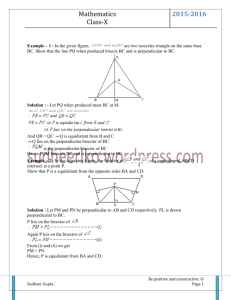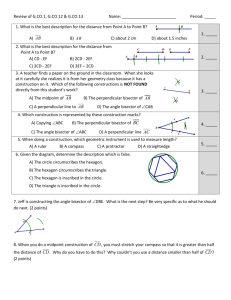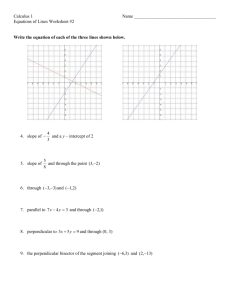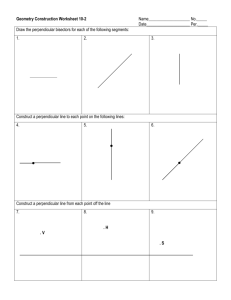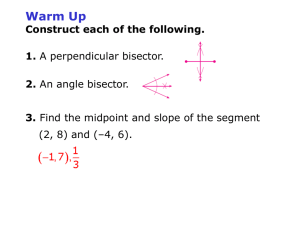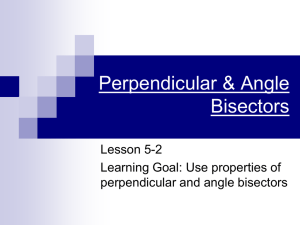Mock Test 2
advertisement
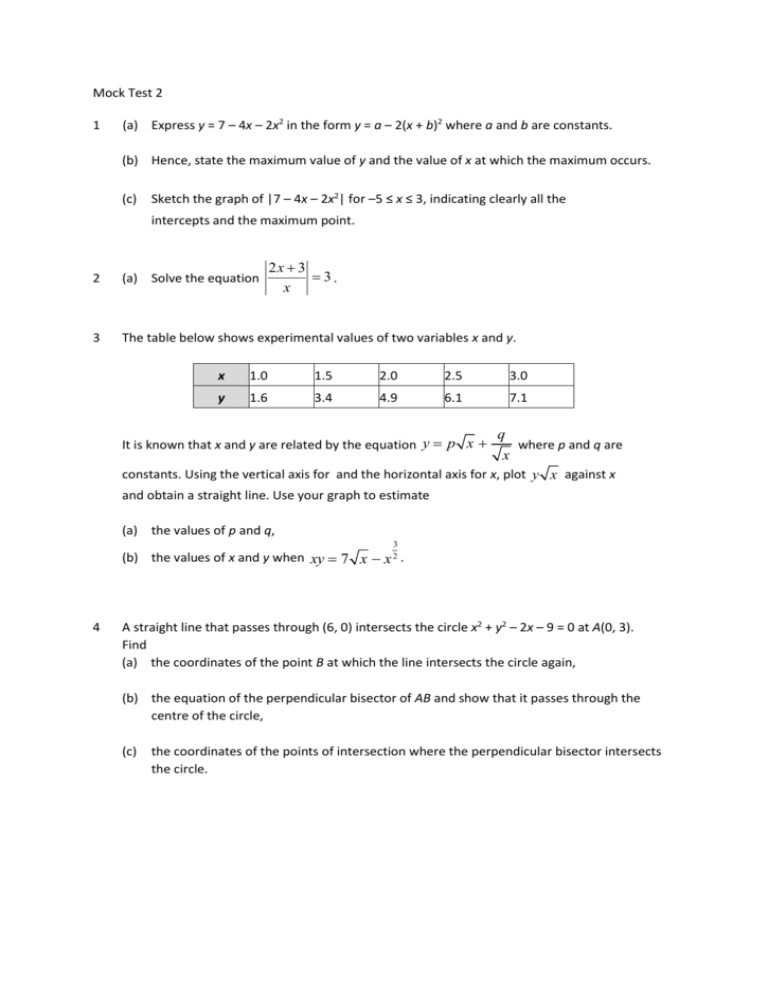
Mock Test 2 1 (a) Express y = 7 – 4x – 2x2 in the form y = a – 2(x + b)2 where a and b are constants. (b) Hence, state the maximum value of y and the value of x at which the maximum occurs. (c) Sketch the graph of |7 – 4x – 2x2| for –5 ≤ x ≤ 3, indicating clearly all the intercepts and the maximum point. 2x 3 3. x 2 (a) Solve the equation 3 The table below shows experimental values of two variables x and y. x 1.0 1.5 2.0 2.5 3.0 y 1.6 3.4 4.9 6.1 7.1 q where p and q are x constants. Using the vertical axis for and the horizontal axis for x, plot y x against x It is known that x and y are related by the equation y p x and obtain a straight line. Use your graph to estimate (a) the values of p and q, 3 (b) the values of x and y when xy 7 x x 2 . 4 A straight line that passes through (6, 0) intersects the circle x2 + y2 – 2x – 9 = 0 at A(0, 3). Find (a) the coordinates of the point B at which the line intersects the circle again, (b) the equation of the perpendicular bisector of AB and show that it passes through the centre of the circle, (c) the coordinates of the points of intersection where the perpendicular bisector intersects the circle. Solutions 1 (a) f(x) = x3 + ax2 + bx + c is divisible by x + 1 and x + 2 f(−1) = 0 (–1)3 + a(−1)2 + b(−1) + c = 0 −1 + a − b + c = 0 a − b + c = 1 (1) f(−2) = 0 (−2) + a(−2) + b(−2) + c =0 4a − 2b + c = 8 (2) 3 2 f(x) = x3 + ax2 + bx + c leaves a remainder of 4 when divided by x − 1 4 f(1) = 4 (1) + a(1) + b + c = 4 a + b + c = 3 (3) 3 2 Solving equations (1), (2) and (3), (3) − (1), (2) − (1), 2b = 2 b =1 3a − b = 7 (4) Substituting b = 1 into (4), a = 2 Substituting a = 2 2 (a) 2 . 3 2 2 and b = 1 into (1), c = – . 3 3 2x 3 2x 3 =3 =3 x x or 2x + 3 = 3x x =3 3 5 Thus, x = 3 or x = . 2x 3 = –3 x 2x + 3 = –3x x= 3 5 3 x 1.0 1.5 2.0 2.5 3.0 y x 1.60 4.16 6.93 9.64 12.3 y p x q x y x px q Y mX c (a) Gradient 4.16 9.64 1.5 2.5 = 5.48 Hence, p = 5.48. From the graph, y-intercept is –3.8, hence, q = –3.8. 4 (a) Gradient of line 3 0 06 1 2 Equation of line y 1 xc 2 (0, 3) lies on the line, 3 1 0 c 2 c=3 The equation of the line is y 1 x 3 2y + x = 6. 2 2y + x = 6 x = 6 – 2y (1) 2 2 x + y – 2x – 9 = 0 (2) Substituting (1) into (2), (6 – 2y)2 + y2 – 2(6 – 2y) – 9 = 0 36 – 24y + 4y2 + y2 – 12 + 4y – 9 = 0 5y2 – 20y + 15 = 0 y2 – 4y + 3 = 0 (y – 1)(y – 3) = 0 y=1 or y=3 Substituting y = 1 and y = 3 into (1), x = 4 and x = 0 respectively. (0, 3) are the coordinates of A, thus, B has coordinates (4, 1). 31 04 1 2 (b) Gradient of AB = Gradient of perpendicular bisector of AB = 2 0 4 3 1 , 2 2 Midpoint of AB = = (2, 2) Equation of perpendicular bisector of AB y = 2x + c (2, 2) lies on perpendicular bisector of AB 2 = 2(2) + c c = –2 The equation of the perpendicular bisector of AB is y = 2x – 2. x2 + y2 – 2x – 9 = 0 (x – 1)2 + y2 = 10 The coordinates of the centre of the circle x2 + y2 – 2x – 9 = 0 are (1, 0). (1, 0) satisfies the equation of the perpendicular bisector of AB, y = 2x – 2 perpendicular bisector passes through (1, 0) (c) y = 2x – 2 (1) 2 2 x + y – 2x – 9 = 0 (2) Substituting (1) into (2), x2 + (2x – 2)2 – 2x – 9 = 0 x2 + 4x2 – 8x + 4 – 2x – 9 = 0 5x2 – 10x – 5 = 0 x2 – 2x – 1 = 0 x=1± 2 Substituting x = 1 + 2 and x = 1 – 2 into (1), y = 2 2 and y = –2 2 respectively. Thus, the coordinates of the points of intersection of the perpendicular bisector and the circle are (1 + 2 , 2 2 ) and (1 – 2 , –2 2 ).
